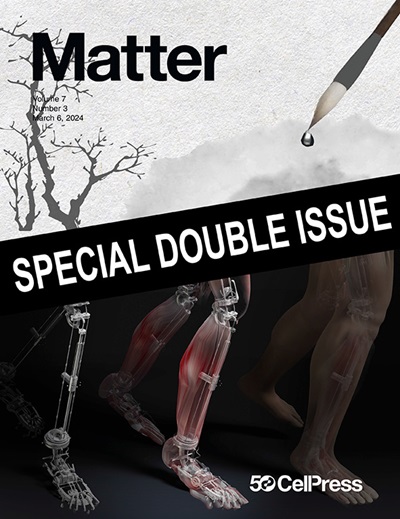Bioinspired and biohybrid soft robots: Principles and emerging technologies
IF 17.5
1区 材料科学
Q1 MATERIALS SCIENCE, MULTIDISCIPLINARY
引用次数: 0
Abstract
Soft robots have drawn increasing attention due to their inherent flexibility, deformability, and adaptability. The natural world, with its evolutionary refinement, presents the best source of inspiration for building soft robots. Creatures with sophisticated soft bodies and delicate mechanisms can be ideal biological models. This perspective focuses on bioinspired and biohybrid soft robots, providing a comprehensive review of the latest research in this area. We introduce the state-of-the-art principles of soft robots according to actuation, material selection, and sensing techniques. Based on biological classification methods used in nature, current research progress on biomimetic soft robots in animals, plants, and microorganisms is described. Emerging areas of interests are also highlighted for different biological species. Additionally, this paper explores the potential application areas of soft robots across various domains, outlining future challenges and ongoing developments.
仿生和生物混合软机器人:原理和新兴技术
软体机器人因其固有的灵活性、可变形性和适应性而受到越来越多的关注。进化完善的自然界是制造软体机器人的最佳灵感来源。拥有复杂的软体和精细机构的生物可以成为理想的生物模型。本视角侧重于生物启发和生物混合软机器人,全面回顾了该领域的最新研究。我们介绍了软机器人在驱动、材料选择和传感技术方面的最新原理。根据自然界中使用的生物分类方法,介绍了动物、植物和微生物中生物仿生软机器人的当前研究进展。本文还重点介绍了不同生物物种的新兴研究领域。此外,本文还探讨了软机器人在各个领域的潜在应用领域,概述了未来的挑战和正在进行的开发。
本文章由计算机程序翻译,如有差异,请以英文原文为准。
求助全文
约1分钟内获得全文
求助全文
来源期刊

Matter
MATERIALS SCIENCE, MULTIDISCIPLINARY-
CiteScore
26.30
自引率
2.60%
发文量
367
期刊介绍:
Matter, a monthly journal affiliated with Cell, spans the broad field of materials science from nano to macro levels,covering fundamentals to applications. Embracing groundbreaking technologies,it includes full-length research articles,reviews, perspectives,previews, opinions, personnel stories, and general editorial content.
Matter aims to be the primary resource for researchers in academia and industry, inspiring the next generation of materials scientists.
 求助内容:
求助内容: 应助结果提醒方式:
应助结果提醒方式:


